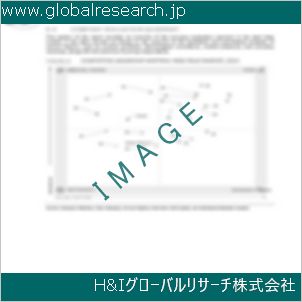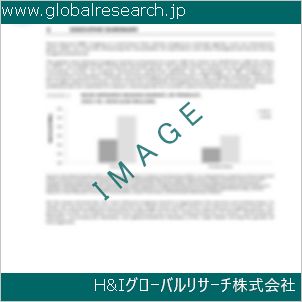Table of Contents
1 Industry Overview of Ferroboron
1.1 Definition and Specifications of Ferroboron
1.1.1 Definition of Ferroboron
1.1.2 Specifications of Ferroboron
1.2 Classification of Ferroboron
1.3 Applications of Ferroboron
1.3.1 Nuclear Application
1.3.2 Non-Nuclear Application
1.4 Industry Chain Structure of Ferroboron
1.5 Industry Overview and Major Regions Status of Ferroboron
1.5.1 Industry Overview of Ferroboron
1.5.2 Global Major Regions Status of Ferroboron
1.6 Industry Policy Analysis of Ferroboron
1.7 Industry News Analysis of Ferroboron
2 Manufacturing Cost Structure Analysis of Ferroboron
2.1 Raw Material Suppliers and Price Analysis of Ferroboron
2.2 Equipment Suppliers and Price Analysis of Ferroboron
2.3 Labor Cost Analysis of Ferroboron
2.4 Other Costs Analysis of Ferroboron
2.5 Manufacturing Cost Structure Analysis of Ferroboron
2.6 Manufacturing Process Analysis of Ferroboron
3 Technical Data and Manufacturing Plants Analysis of Ferroboron
3.1 Capacity and Commercial Production Date of Global Ferroboron Major Manufacturers in 2023
3.2 Manufacturing Plants Distribution of Global Ferroboron Major Manufacturers in 2023
3.3 R&D Status and Technology Source of Global Ferroboron Major Manufacturers in 2023
3.4 Raw Materials Sources Analysis of Global Ferroboron Major Manufacturers in 2023
4 Capacity, Production and Revenue Analysis of Ferroboron by Regions, Types and Manufacturers
4.1 Global Capacity, Production and Revenue of Ferroboron by Regions 2019-2024
4.2 Global and Major Regions Capacity, Production, Revenue and Growth Rate of Ferroboron 2019-2024
4.3 Global Capacity, Production and Revenue of Ferroboron by Types 2019-2024
4.4 Global Capacity, Production and Revenue of Ferroboron by Manufacturers 2019-2024
5 Price, Cost, Gross and Gross Margin Analysis of Ferroboron by Regions, Types and Manufacturers
5.1 Price, Cost, Gross and Gross Margin Analysis of Ferroboron by Regions 2019-2024
5.2 Price, Cost, Gross and Gross Margin Analysis of Ferroboron by Types 2019-2024
5.3 Price, Cost, Gross and Gross Margin Analysis of Ferroboron by Manufacturers 2019-2024
6 Consumption Volume, Consumption Value and Sale Price Analysis of Ferroboron by Regions, Types and Applications
6.1 Global Consumption Volume and Consumption Value of Ferroboron by Regions 2019-2024
6.2 Global and Major Regions Consumption Volume, Consumption Value and Growth Rate of Ferroboron 2019-2024
6.3 Global Consumption Volume and Consumption Value of Ferroboron by Types 2019-2024
6.4 Global Consumption Volume and Consumption Value of Ferroboron by Applications 2019-2024
6.5 Sale Price of Ferroboron by Regions 2019-2024
6.6 Sale Price of Ferroboron by Types 2019-2024
6.7 Sale Price of Ferroboron by Applications 2019-2024
6.8 Market Share Analysis of Ferroboron by Different Sale Price Levels
7 Supply, Import, Export and Consumption Analysis of Ferroboron
7.1 Supply, Consumption and Gap of Ferroboron 2019-2024
7.2 Global Capacity, Production, Price, Cost, Revenue, Supply, Import, Export and Consumption of Ferroboron 2019-2024
7.3 USA Capacity, Production, Price, Cost, Revenue, Supply, Import, Export and Consumption of Ferroboron 2019-2024
7.4 EU Capacity, Production, Price, Cost, Revenue, Supply, Import, Export and Consumption of Ferroboron 2019-2024
7.5 China Capacity, Production, Price, Cost, Revenue, Supply, Import, Export and Consumption of Ferroboron 2019-2024
7.6 Japan Capacity, Production, Price, Cost, Revenue, Supply, Import, Export and Consumption of Ferroboron 2019-2024
8 Major Manufacturers Analysis of Ferroboron
8.1 Manufacturer One
8.1.1 Company Profile
8.1.2 Product Picture and Specifications
8.1.2.1 Type I
8.1.2.2 Type II
8.1.2.3 Type III
8.1.3 Capacity, Production, Price, Cost, Gross and Revenue
8.1.4 Contact Information
8.2 Manufacturer Two
8.2.1 Company Profile
8.2.2 Product Picture and Specifications
8.2.2.1 Type I
8.2.2.2 Type II
8.2.2.3 Type III
8.2.3 Capacity, Production, Price, Cost, Gross and Revenue
8.2.4 Contact Information
8.3 Manufacturer Three
8.3.1 Company Profile
8.3.2 Product Picture and Specifications
8.3.2.1 Type I
8.3.2.2 Type II
8.3.2.3 Type III
8.3.3 Capacity, Production, Price, Cost, Gross and Revenue
8.3.4 Contact Information
8.4 Manufacturer Four
8.4.1 Company Profile
8.4.2 Product Picture and Specifications
8.4.2.1 Type I
8.4.2.2 Type II
8.4.2.3 Type III
8.4.3 Capacity, Production, Price, Cost, Gross and Revenue
8.4.4 Contact Information
8.5 Manufacturer Five
8.5.1 Company Profile
8.5.2 Product Picture and Specifications
8.5.2.1 Type I
8.5.2.2 Type II
8.5.2.3 Type III
8.5.3 Capacity, Production, Price, Cost, Gross and Revenue
8.5.4 Contact Information
…
9 Marketing Trader or Distributor Analysis of Ferroboron
9.1 Marketing Channels Status of Ferroboron
9.2 Traders or Distributors with Contact Information of Ferroboron by Regions
9.3 Ex-work Price, Channel Price and End Buyer Price Analysis of Ferroboron
9.4 Regional Import, Export and Trade Analysis of Ferroboron
10 Industry Chain Analysis of Ferroboron
10.1 Upstream Major Raw Materials Suppliers Analysis of Ferroboron
10.1.1 Major Raw Materials Suppliers with Contact Information Analysis of Ferroboron
10.1.2 Major Raw Materials Suppliers with Supply Volume Analysis of Ferroboron by Regions
10.2 Upstream Major Equipment Suppliers Analysis of Ferroboron
10.2.1 Major Equipment Suppliers with Contact Information Analysis of Ferroboron
10.2.2 Major Equipment Suppliers with Product Pictures Analysis of Ferroboron by Regions
10.3 Downstream Major Consumers Analysis of Ferroboron
10.3.1 Major Consumers with Contact Information Analysis of Ferroboron
10.3.2 Major Consumers with Consumption Volume Analysis of Ferroboron by Regions
10.4 Supply Chain Relationship Analysis of Ferroboron
11 Development Trend of Analysis of Ferroboron
11.1 Capacity, Production and Revenue Forecast of Ferroboron by Regions and Types
11.1.1 Global Capacity, Production and Revenue of Ferroboron by Regions 2024-2029
11.1.2 Global and Major Regions Capacity, Production, Revenue and Growth Rate of Ferroboron 2024-2029
11.1.3 Global Capacity, Production and Revenue of Ferroboron by Types 2024-2029
11.2 Consumption Volume and Consumption Value Forecast of Ferroboron by Regions, Types and Applications
11.2.1 Global Consumption Volume and Consumption Value of Ferroboron by Regions 2024-2029
11.2.2 Global and Major Regions Consumption Volume, Consumption Value and Growth Rate of Ferroboron 2024-2029
11.2.3 Global Consumption Volume and Consumption Value of Ferroboron by Types 2024-2029
11.2.4 Global Consumption Volume and Consumption Value of Ferroboron by Applications 2024-2029
11.3 Supply, Import, Export and Consumption Forecast of Ferroboron
11.3.1 Supply, Consumption and Gap of Ferroboron 2024-2029
11.3.2 Global Capacity, Production, Price, Cost, Revenue, Supply, Import, Export and Consumption of Ferroboron 2024-2029
11.3.3 USA Capacity, Production, Price, Cost, Revenue, Supply, Import, Export and Consumption of Ferroboron 2024-2029
11.3.4 EU Capacity, Production, Price, Cost, Revenue, Supply, Import, Export and Consumption of Ferroboron 2024-2029
11.3.5 China Capacity, Production, Price, Cost, Revenue, Supply, Import, Export and Consumption of Ferroboron 2024-2029
11.3.6 Japan Capacity, Production, Price, Cost, Revenue, Supply, Import, Export and Consumption of Ferroboron 2024-2029
12 New Project Investment Feasibility Analysis of Ferroboron
12.1 New Project SWOT Analysis of Ferroboron
12.2 New Project Investment Feasibility Analysis of Ferroboron
13 Conclusion of the Global Ferroboron (CAS 11108-67-1) Industry 2024 Market Research Report
| ※参考情報 フェロボロン(Ferroboron)は、化学式 FeB で表される化合物で、主に鉄(Fe)とホウ素(B)からなる合金です。この化合物は、その特異な性質と機能から、多くの産業において重要な役割を果たしています。以下では、フェロボロンの定義、特徴、種類、用途、関連技術について詳しく解説いたします。 フェロボロンは、通常、高温で鉄とホウ素を化学反応させることによって生成されます。生成過程において、様々な割合の鉄とホウ素を使用することで、異なる特性を持つ製品が得られます。フェロボロンの主な特徴は、鉄とホウ素の優れた合金としての性質に起因し、高い耐熱性や弾性、さらには耐食性を備えています。また、ホウ素の添加によって材料の硬度や延性が向上し、さらに加工性も改善されることがしばしばあります。 フェロボロンは、一般的に二つの主要な種類に分類されます。その一つは、高ホウ素型のフェロボロンで、ホウ素含有率が高いため、特に高い硬度を持つことが特徴です。このタイプのフェロボロンは、主に溶接材料や合金の製造に利用されます。もう一つは、低ホウ素型のフェロボロンで、ホウ素の含有量が少なく、これにより柔軟性や加工のしやすさが向上します。このようなタイプは、機械部品や工具鋼の補強材として使用されることが多いです。 フェロボロンの主な用途は、金属加工産業や溶接技術において幅広く見られます。特に鉄鋼業界では、フェロボロンを追加することで鋼の強度と硬度を向上させ、さらに耐摩耗性を高めることができます。このため、一般的な建設用鋼材や工具鋼の材料として利用されています。また、自動車産業においても、フェロボロンはエンジン部品やシャーシの強化材料として広く使用されています。 加えて、フェロボロンは電子デバイスや磁気デバイスの製造にも用いられます。特に、ホウ素の特性により、半導体製品やメモリデバイスにおいて高い性能が求められる場面での応用が見込まれています。フェロボロンを用いることで、これらのデバイスは高い信号対雑音比や耐熱性を持ち、高性能化が可能になります。 関連技術としては、フェロボロンを加工するための新たな技術の開発が進められています。特に、粉末冶金技術を用いた加工法が注目されています。粉末冶金では、フェロボロンを微細な粉末状に加工することにより、均一な性質を持つ部品を製造することが可能になります。この技術は、従来の鋳造や鍛造に比べて材料の利用効率が高く、軽量かつ強靭な部品の製造が期待されています。 さらに、フェロボロンの使用に関する環境への配慮も重要です。ホウ素を含む化合物の取り扱いや廃棄にあたっては、環境への影響を最小限に抑える必要があります。このため、リサイクル技術の開発や、環境に優しい生産プロセスの導入が求められています。 総じて、フェロボロンはその優れた特性により、多岐にわたる分野で重要な材料として使用されています。材料科学の進展とともに、新たな応用可能性も広がっており、今後もその利用範囲は拡大すると考えられます。これらの技術革新や特性を活かし、持続可能な産業発展に寄与することが期待されています。 |
❖ 免責事項 ❖
http://www.globalresearch.jp/disclaimer












